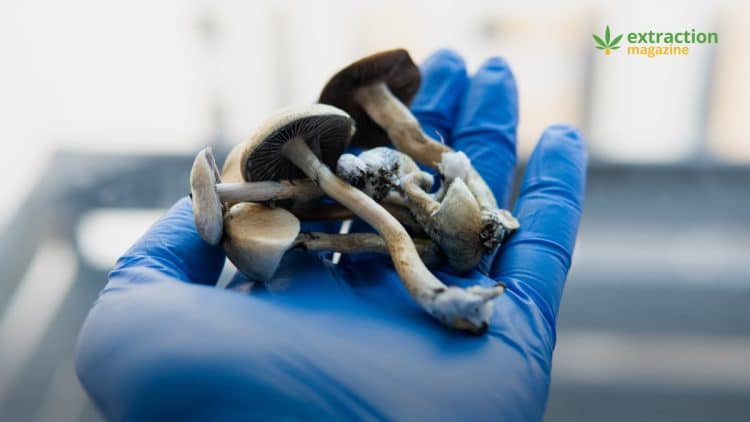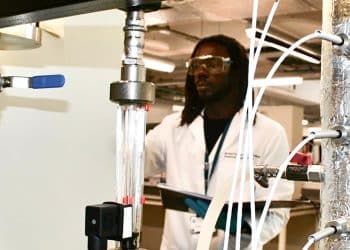Psilocybin is the main active component contained in certain kind of mushrooms which have been used since ancient time in spiritual and religious ceremonies and as therapeutic treatment for certain neuropsychiatric conditions. Nowadays, you can get it in all forms, from a portion of dried fruiting bodies to an ordinary magic mushroom chocolate bar that’s easy to find in nearly all dispensaries around the US and Canada. The active substance is always the same: psilocybin.
psilocybin is a tryptophan indole-based alkaloid belonging to the class of serotonergic hallucinogens, compounds capable of interacting in the central and peripheral nervous system with serotonin receptors such as 5-hydroxytryptamine receptors (5-HTs). Serotonin receptors are linked to many biological and neurological processes such as emotions, anxiety, memory, appetite, learning, cognition and sleep among others. This kind of receptors is the main target for many drugs for both pharmaceutical and recreational purposes including antidepressants, antipsychotics, antiemetic and so on.
In the case of mushrooms, the active metabolite of psilocybin, psilocin, acts as agonist of 5-HT type 2A inducing a mystical-like hallucinatory effect.
Among the common acute subjective effects there are alterations in perceptions and mood, closed-eyes images, altered consciousness and weakened sense of ego.
Psylocybin as treatment of mood disorders
There is evidence of the efficacy of psilocybin in the treatment of mood and anxiety disorders such as depression, schizophrenia, bipolar disorder and substance-dependence disorders. Moreover, due to psilocybin good safety profile, this psychedelic substance appears as the most favourable among the hallucinogens in treating mental–health disorders.
Many studies report the increase of mindfulness after psilocybin treatment in addition to long lasting positive effects on mood and behavior on healthy individuals. People affected with cancer or persistent depression symptoms have been treated with psilocybin or other kind of serotonergic psychedelic compunds, showing great improvements in mood, reduction of depression and anxiety in addition to enhanced awareness of themselves.
Even if many neuroimaging studies have been conducted to clarify psilocybin effects on brain function and functional connectivity, there is still lack of a precise understanding of long-lasting effects of this powerful molecule on our cerebral 5-HT2A receptors.
Recently a phase 2 double-blind trial reported the positive effects on treatment-resistant depression patients induced by a single dose of a synthetic proprietary formulation of psilocybin along with psychological support. The study involved the administration of 25 mg, 10mg and 1 mg psilocybin on 79, 70 and 79 tratment-resistant depression patients respectively. Even if the highest single-dose of psilocybin succeded in alleviating the symptoms of depression significantly, a large amount of patients (77%) suffered from adverse effects including nausea, headache and dizzines.
The trial session lasted 6 to 8 hours and all the patients performed the trial in a controlled setting and supervised by a therapist.
One of the big differences than other traditional methods to treat depression is that psilocybin may be administered only once to get visible positive result on the mental illness: in fact, available treatments with antidepressant drugs sometimes involve their administration every day or multiple time a day. In addition to that, with conventional antidepressants, many patients with major depressive disorder (MDD) tend to fail achieving medication remission and may need higher dosages to feel the therapy effects.
Why To Synthesize Psilocybin?
When performing clinical trials, the compounds studied should be standardized and pure in order to have reliable data and precise informations regarding the administered dose. The psilocybin contained in mushrooms can vary in concentration from one fungus to another and the isolation of the pure active compound can be difficult to be done and could involve large amount of solvents.
Moreover, due to the difficulties in recognising the psilocybin-containing mushrooms, experts should be involved or long morphologic and microscopic analyses should be performed in addition to the application of chromatographic methods such as high-performance liquid cromatography (HPLC), gas chromatography (GC) and thin-layer chromatography (TLC) to be sure about the identity of the isolated mushroom-derived compound. It should be noticed that to perform clinical trials large quantities of the mushroom derived active ingredient should be available and retrieving in nature such a big amount of psylocibin may be too complicated.
Thanks to organic synthesis it is possible to reproduce in the laboratory nature: psilocybin along its metabolite psilocin can be made trough a synthesis of around 7 steps, obtaining pure products that can be standardized and used in clinical trials. In terms of molecular shape, the synthesized psilocybin is exactly the same as the one found in magic mushrooms, even if what is missing is all the rest of the shroom constituents.
It has been hypotized that the simultaneous presence of other tryptamine compounds in magic mushrooms could synergistically influence the effects of the major hallucinogen psilocybin in a phenomenon called “entourage effect”. Among the other psychoactive chemical compounds present in mushrooms there are norbaeocystin, baeocystin, norpsilocin, and aeruginascin, and their concentration in mushrooms can vary depending on the species and the growing conditions.
There is still lack of scientific evidence about the mushrooms components induced “entourage effect” but preliminary studies on mushrooms minor alkaoids show their capability in activating serotonin receptors and their possible influence in the psychoactive experience.
Conclusion
There is still a lot to understand on psilocybin and its potential but the recent study on the single-dose of psilocybin to treat people suffering from MDD is one of the most robust and rigorous phase 2 clinical trial using an hallucinogen since always. Even if the patented synthesized psilocybin may pass the phase 3 trial and will become a regulated medication, most likely the therapy should be performed in the same controlled medical setting of the scientific study and the patient should be monitored by a specialized therapist for all the treatment.
More studies should be done on magic mushrooms to understand the precise interaction of the constituents on our body, the differences in effects from the isolated active compounds and the potential major benefits of the full mushroom composition compared to the isolated psychoactive molecule. Sistematic studies on mushroom derived tryptamines should be done because they may potentially have the similar beneficial effects on MDD of psylocibin with less adverse effects or different beneficial traits, in addition to be good drug candidates for future clinical development.












